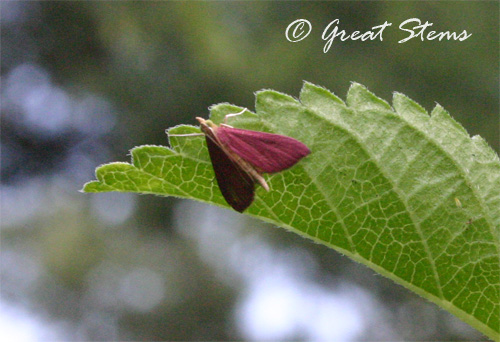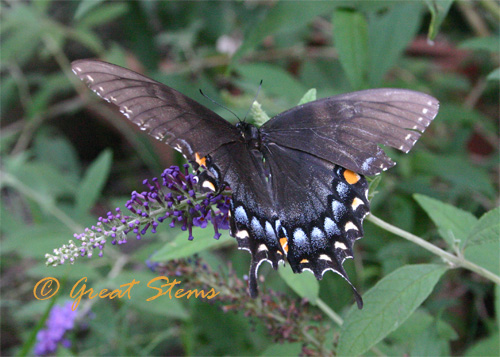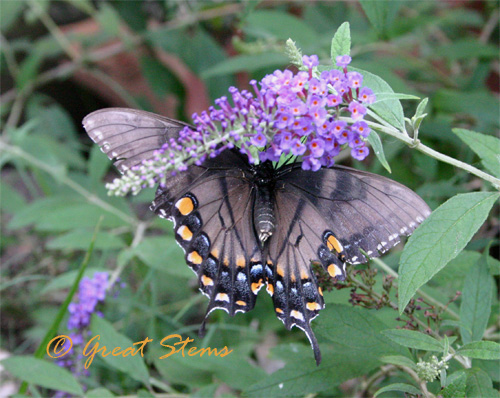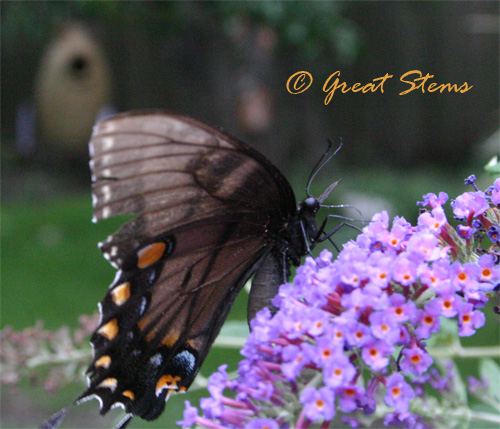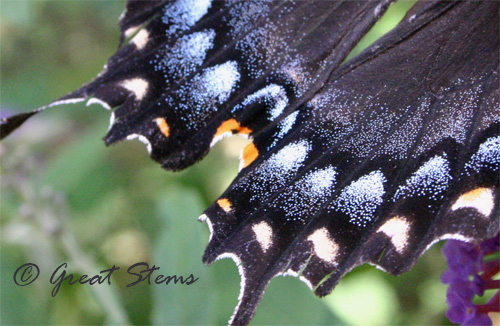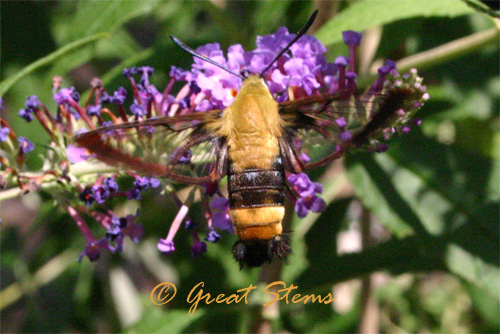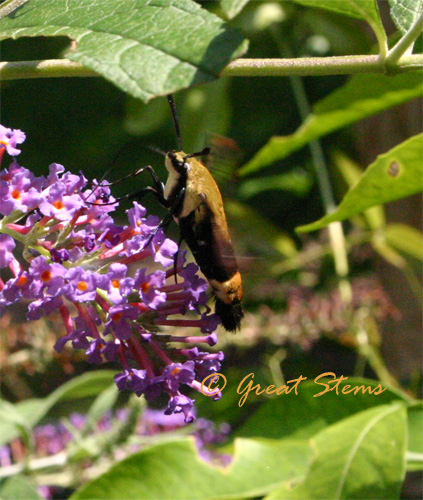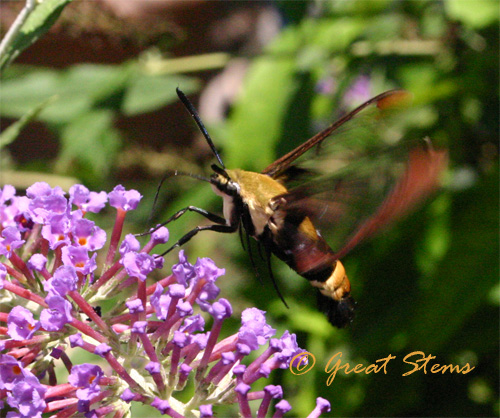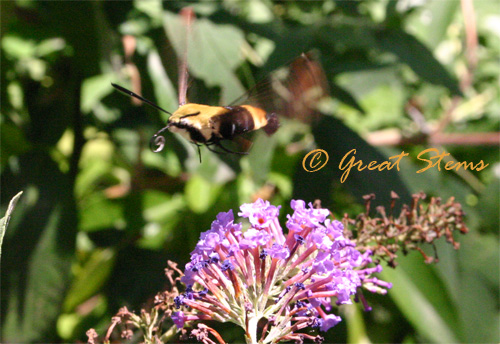After an unintentional hiatus, I'm back. Things got rather hectic in my life as the school year transitioned to summer, and new schedules and projects kept my computer time to a ridiculous all-time low, something to rival the Stone Age. Plus, I didn't want to blog until I'd migrated my platform away from Movable Type, and of course here I'm having to blog on MT anyway. But that will change soon! The good news is that the garden overall did not suffer for my busy schedule, thank goodness.
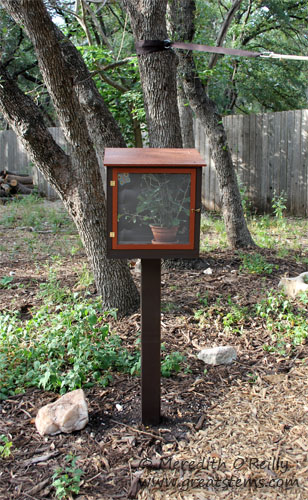 We did complete one of my wish-list projects. For some time, I'd been wanting a more permanent structure for raising caterpillars; with the garden and backyard looking so nice, the caterpillar mesh laundry basket just didn't cut it anymore. Welcome to our new caterpillar house!
We did complete one of my wish-list projects. For some time, I'd been wanting a more permanent structure for raising caterpillars; with the garden and backyard looking so nice, the caterpillar mesh laundry basket just didn't cut it anymore. Welcome to our new caterpillar house!
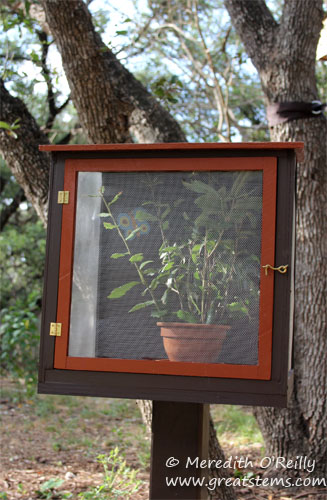 Initially I sketched a basic design, and then Michael built it, using primarily leftover materials from projects of old. We did buy window screen and a latch, so the caterpillar house cost us a whopping $5. For the paint, I used leftover environmentally-friendly exterior paint from when we painted our actual house. The caterpillar house is practically a Mini-Me!
Initially I sketched a basic design, and then Michael built it, using primarily leftover materials from projects of old. We did buy window screen and a latch, so the caterpillar house cost us a whopping $5. For the paint, I used leftover environmentally-friendly exterior paint from when we painted our actual house. The caterpillar house is practically a Mini-Me!
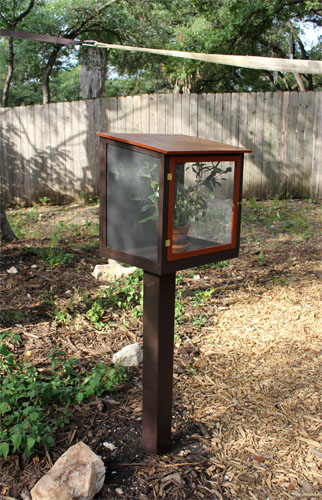 Here's a side view. The sloping roof is for rain, of course. But it doesn't keep bird poop off the top! The sturdy post means that I no longer do I have to worry about the dogs knocking over the caterpillar tent. We (and by we, I mean Michael) also dug a 2-foot hole into the ground to make sure that post was going to stay good and stable.
Here's a side view. The sloping roof is for rain, of course. But it doesn't keep bird poop off the top! The sturdy post means that I no longer do I have to worry about the dogs knocking over the caterpillar tent. We (and by we, I mean Michael) also dug a 2-foot hole into the ground to make sure that post was going to stay good and stable.
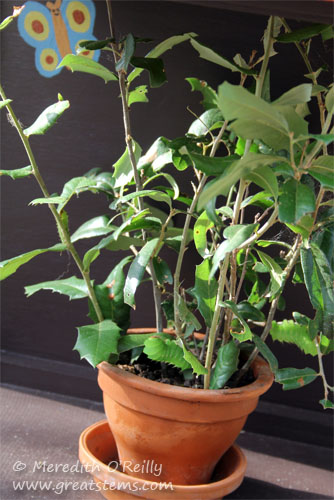 Guess what -- the house has proven to be wonderful. Caterpillars inside stay nicely protected from wasps and birds, and a simple pot with moist soil is enough to keep leaves relatively fresh and caterpillars safe from drowning. I'm going to be making an exterior-grade cloth rectangle for the bottom so that I can keep the bottom clean from caterpillar frass.
Guess what -- the house has proven to be wonderful. Caterpillars inside stay nicely protected from wasps and birds, and a simple pot with moist soil is enough to keep leaves relatively fresh and caterpillars safe from drowning. I'm going to be making an exterior-grade cloth rectangle for the bottom so that I can keep the bottom clean from caterpillar frass.
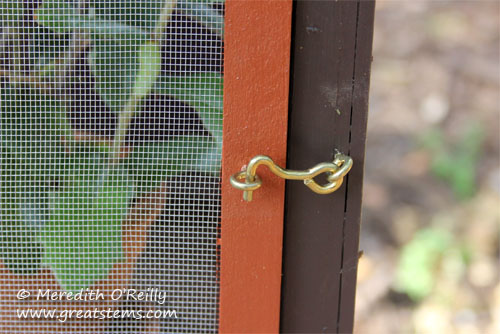 Here's the little latch. Isn't it just adorable?
Here's the little latch. Isn't it just adorable?
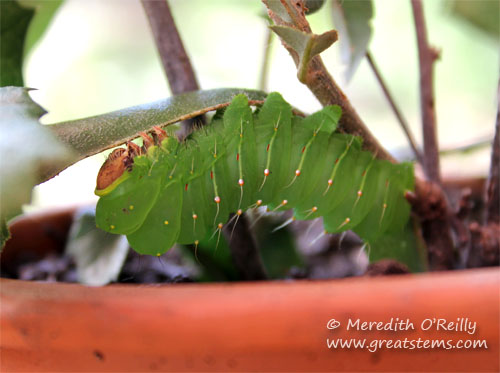 Right now I'm raising Polyphemus moth caterpillars. They are already getting huge.
Right now I'm raising Polyphemus moth caterpillars. They are already getting huge.
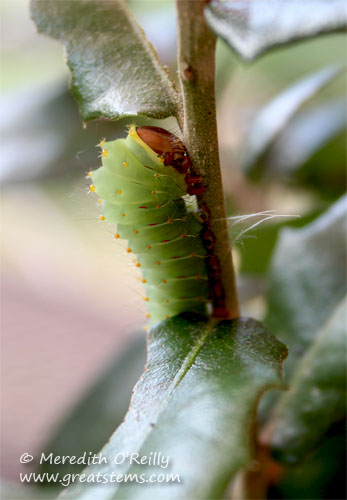
Fortunately, despite their enormous appetites, they are such easy guests. Among other things, they eat oak leaves, the most plentiful leaves on our property. But they'll also eat leaves of citrus trees, trees of the Prunus and elm families, and more.
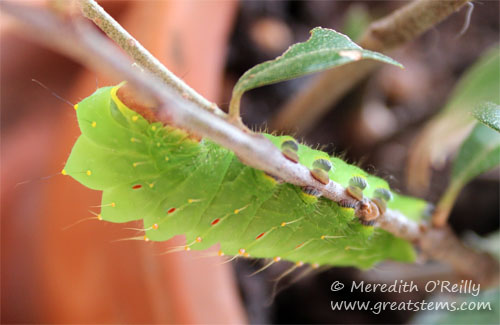
Just look at those itty bitty feet and little hairs. I think these caterpillars are absolutely gorgeous, itty bitty feet, hairs, color, and all.
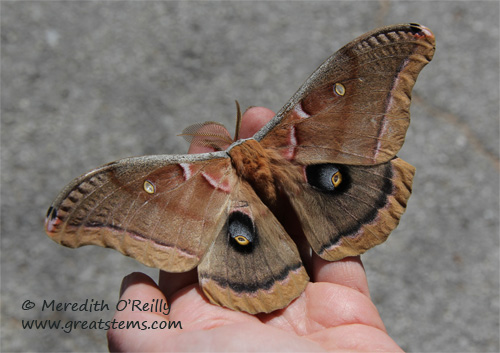 You might recall the Polyphemus moth that joined us for a rather thrilling car ride home in the spring. Here's one of the photos from that day. Big caterpillar = big moth! Wing span will be about 6 inches across.
You might recall the Polyphemus moth that joined us for a rather thrilling car ride home in the spring. Here's one of the photos from that day. Big caterpillar = big moth! Wing span will be about 6 inches across.
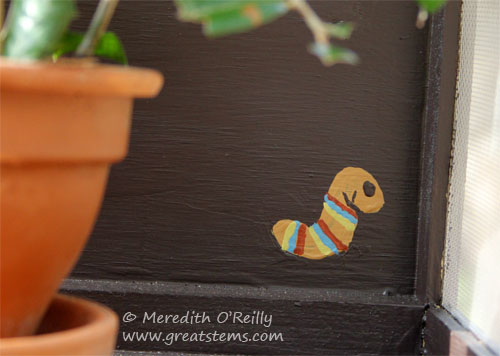
Yep, the caterpillars are doing fine in their new house, though I brought them into our big house during the 107-degree weather we had recently.
In case you are wondering about the strap on the trees in the above pictures, they are used for this: Michael's new hammock.
 I guess he deserves a rest now and then! The mulch below is the remains of the last invasive plants we'd had on the property, two 50-foot Tree of Heavens. We finally were able to hire an arborist to bring them down, and what a relief that was! It's been wonderful to get to plant new natives in their place. There -- that was another big project we took care of during my blogging absence! More to come!
I guess he deserves a rest now and then! The mulch below is the remains of the last invasive plants we'd had on the property, two 50-foot Tree of Heavens. We finally were able to hire an arborist to bring them down, and what a relief that was! It's been wonderful to get to plant new natives in their place. There -- that was another big project we took care of during my blogging absence! More to come!


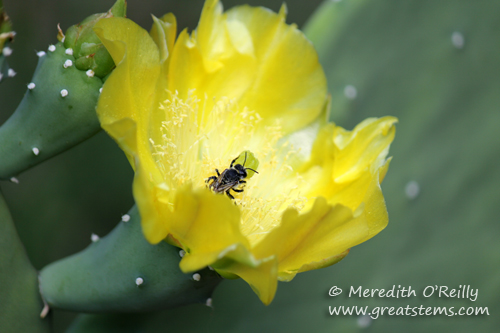

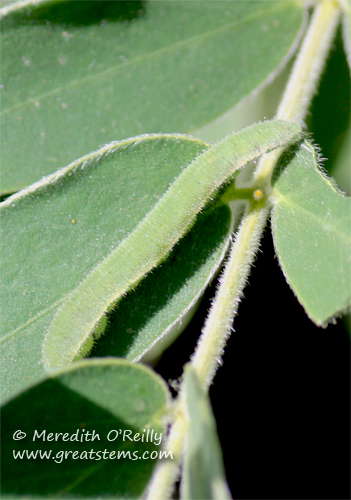
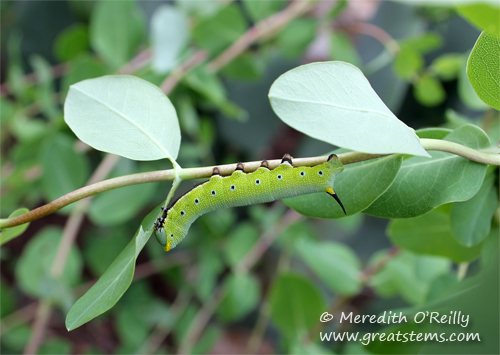
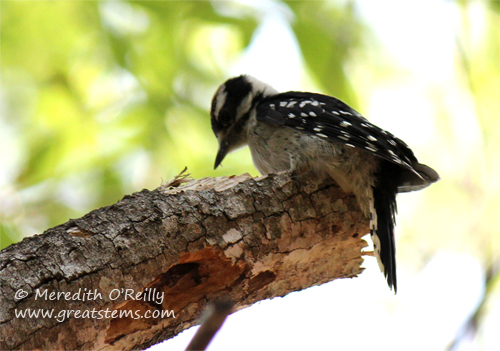
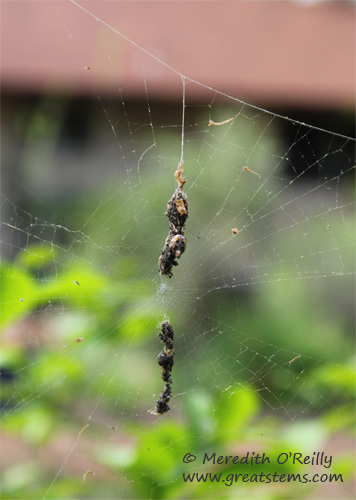
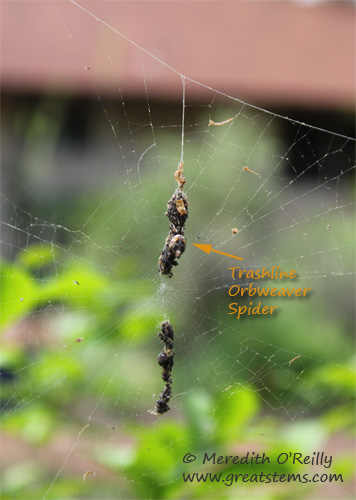
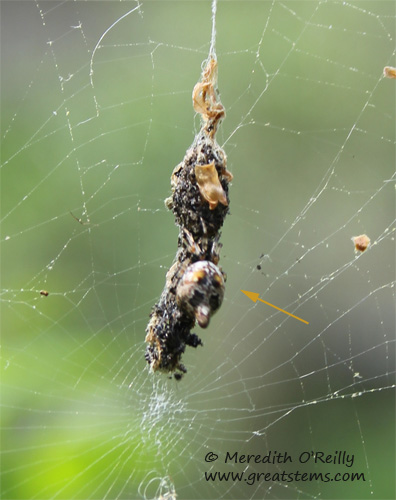

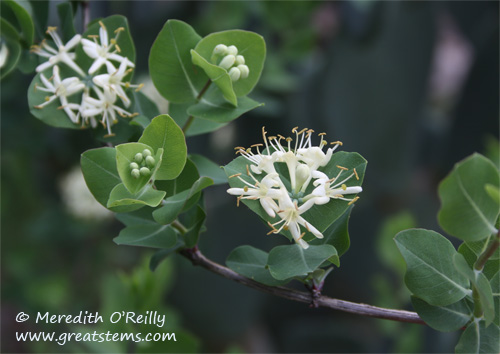
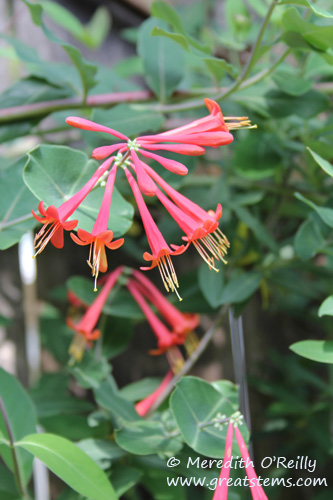
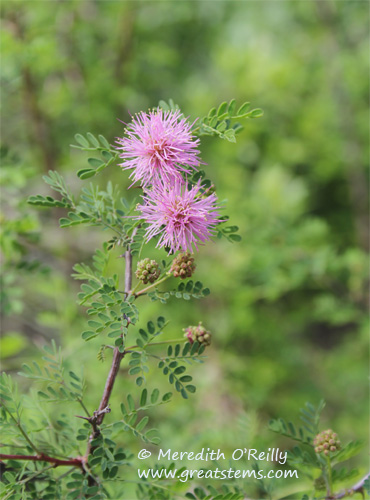
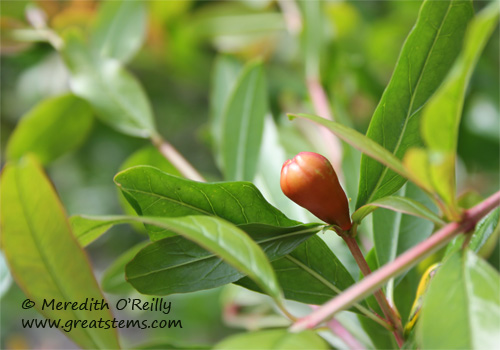
 What about the Blackfoot Daisies, twice as big as when I planted them before our trip?
What about the Blackfoot Daisies, twice as big as when I planted them before our trip?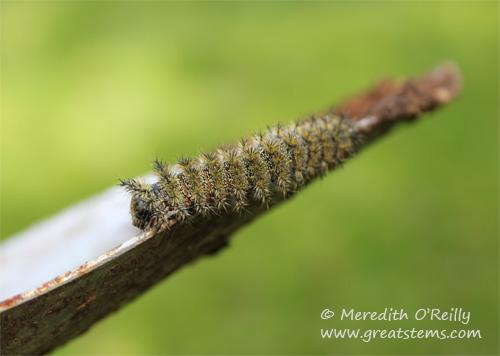





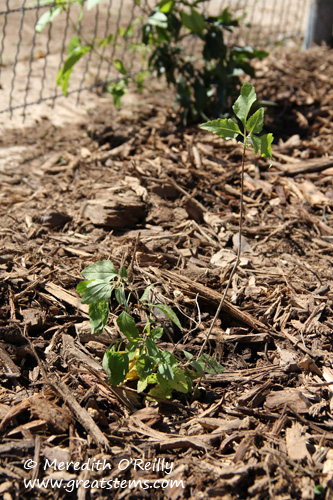
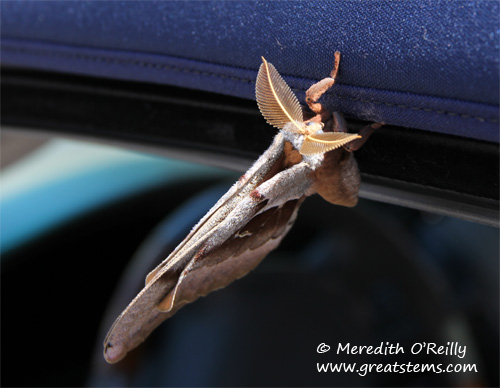 As we were getting ready to leave, my husband called me over to see a creature hanging upside-down from the car of a volunteer. It turned out to be a gorgeous Lepidopteran.
As we were getting ready to leave, my husband called me over to see a creature hanging upside-down from the car of a volunteer. It turned out to be a gorgeous Lepidopteran. 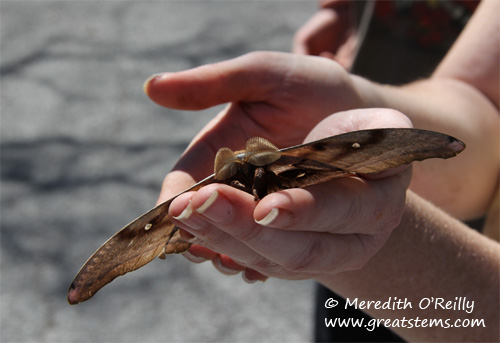
 Perhaps because it was darker in the car, the moth came to life once we got moving on the road. By the time we were on the highway, it was fluttering all about, making for quite an interesting drive home. At one point, the Polyphemus moth decorated my husband as a bowtie.
Perhaps because it was darker in the car, the moth came to life once we got moving on the road. By the time we were on the highway, it was fluttering all about, making for quite an interesting drive home. At one point, the Polyphemus moth decorated my husband as a bowtie.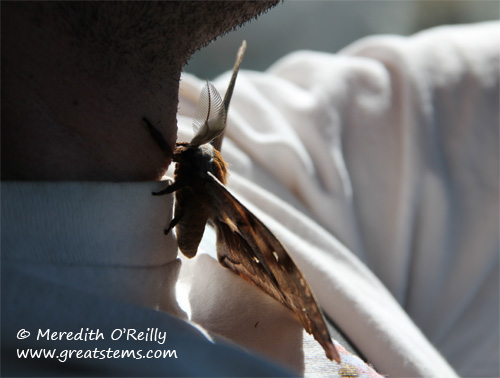
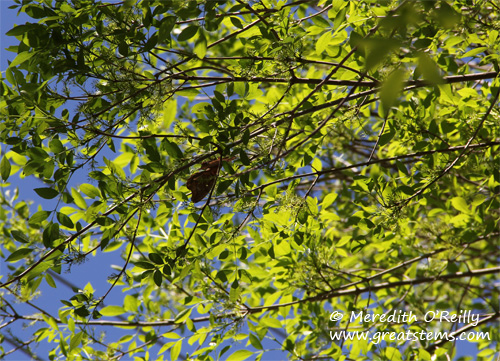
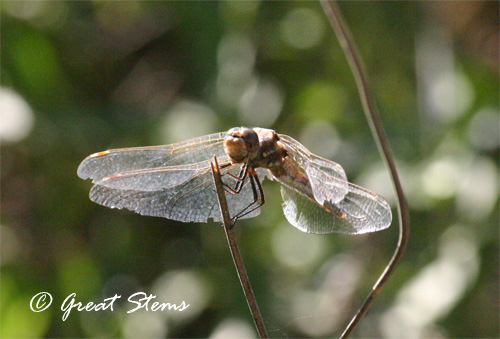
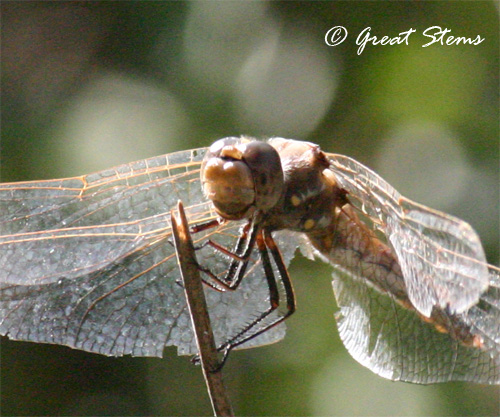
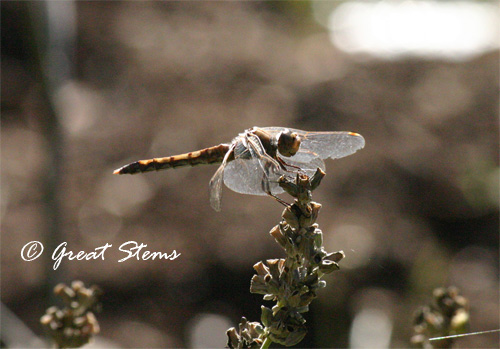
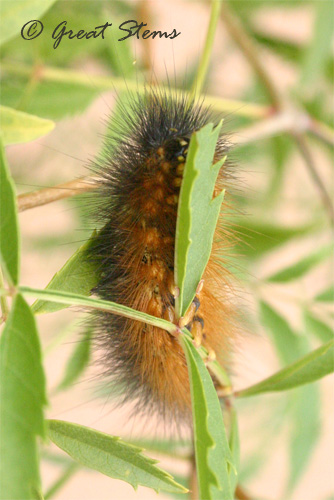
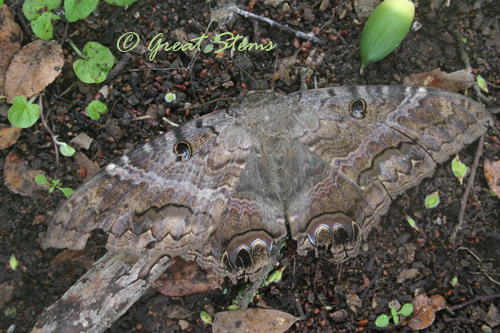
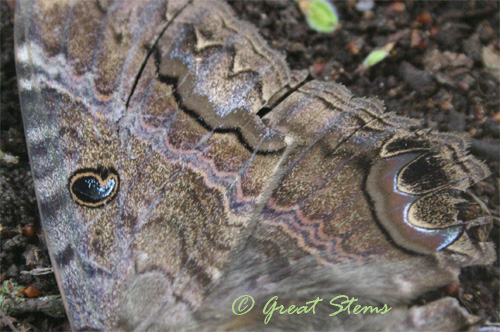
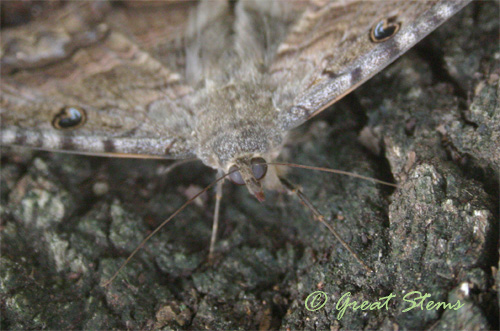
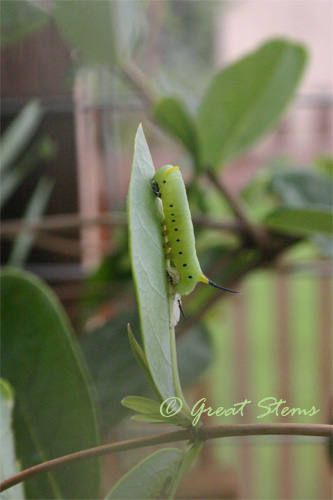
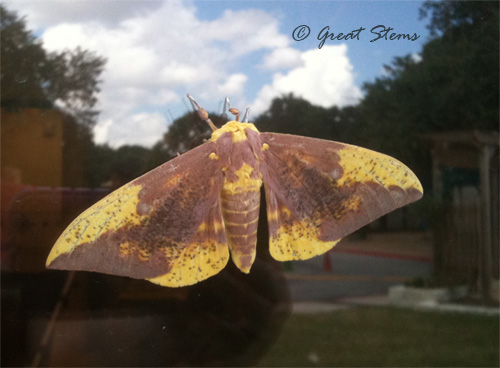
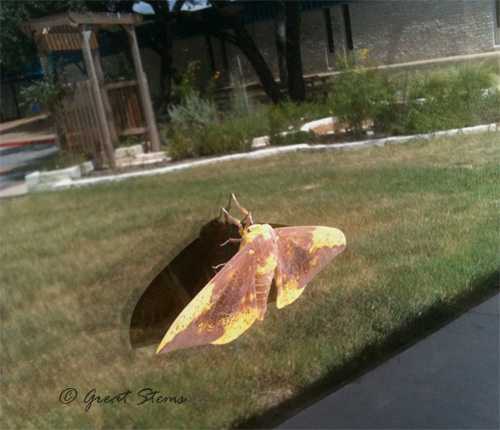
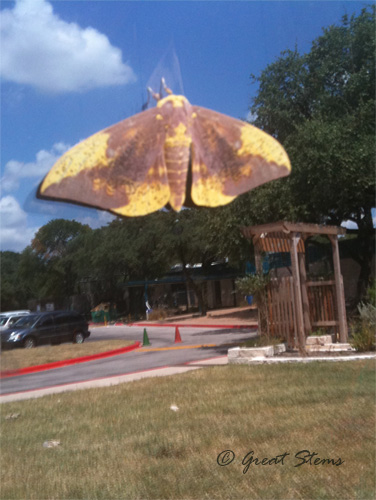
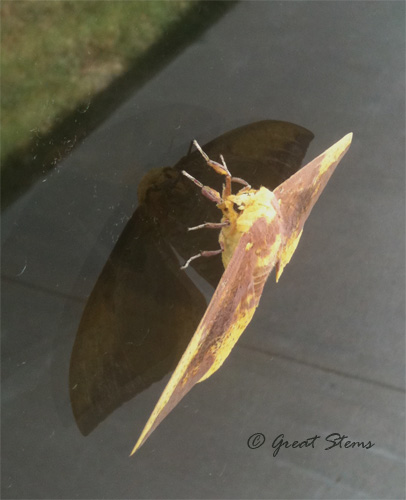
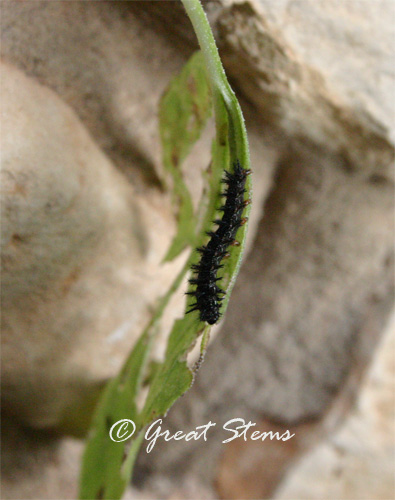


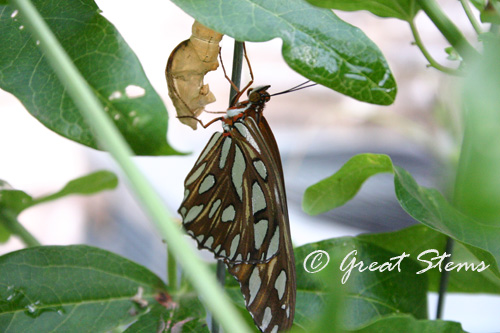
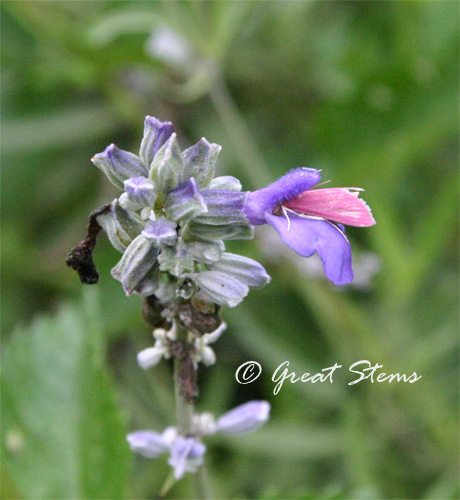 This next photo makes it look much darker than it really is -- the moth is actually a very dainty pink. And dainty in size, too!
This next photo makes it look much darker than it really is -- the moth is actually a very dainty pink. And dainty in size, too!